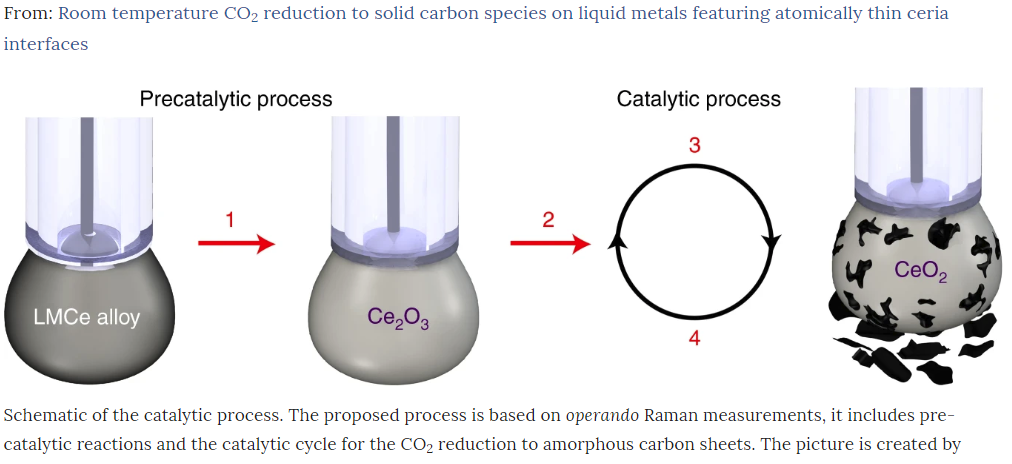Robert, calming your inquiring mind is indeed a challenge.
But as your curiosity is aroused then this original scientific article which describes in detail how it is done should alleviate your doubts.
Very roughly they invented a catalyst which greatly facilitates the process. This is what a catalyst does.
Consider the catalytic converter in series with your modern exhaust pipe sucking pollution out of the exhaust stream.
Of course as you so astutely point out, the ultimate success depends on the commercialization of the process and sticking it in coal generator exhaust stacks.Room temperature CO2 reduction to solid carbon species on liquid metals featuring atomically thin ceria interfacesDorna Esrafilzadeh, Ali Zavabeti, Rouhollah Jalili, Paul Atkin, Jaecheol Choi, Benjamin J. Carey, Robert Brkljača, Anthony P. O’Mullane, Michael D. Dickey, David L. Officer, Douglas R. MacFarlane, Torben Daeneke & Kourosh Kalantar-Zadeh
Nature Communications volume 10, Article number: 865 (2019)
A Publisher Correction to this article was published on 20 March 2019 This article has been updated
 Abstract
AbstractNegative carbon emission technologies are critical for ensuring a future stable climate. However, the gaseous state of CO
2 does render the indefinite storage of this greenhouse gas challenging.
Herein, we created a liquid metal electrocatalyst that contains metallic elemental cerium nanoparticles, which facilitates the electrochemical reduction of CO
2 to layered solid carbonaceous species, at a low onset potential of −310 mV vs CO
2/C.
We exploited the formation of a cerium oxide catalyst at the liquid metal/electrolyte interface, which together with cerium nanoparticles, promoted the room temperature reduction of CO
2.
Due to the inhibition of van der Waals adhesion at the liquid interface, the electrode was remarkably resistant to deactivation via coking caused by solid carbonaceous species.
The as-produced solid carbonaceous materials could be utilised for the fabrication of high-performance capacitor electrodes.
Overall, this liquid metal enabled electrocatalytic process at room temperature may result in a viable negative emission technology.
Read on herehttps://www.nature.com/articles/s41467-019-08824-8

 Forum
Forum

 Home
Home 

 Album
Album 

 Help
Help

 Search
Search

 Recent
Recent 

 Rules
Rules 

 Login
Login

 Register
Register





 Pages: 1
Pages: 1 

